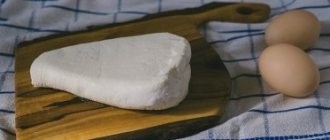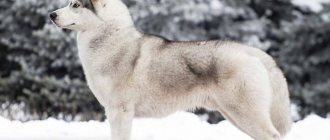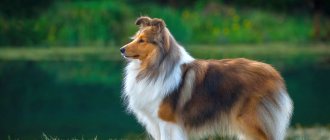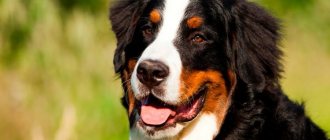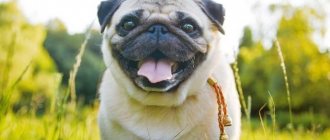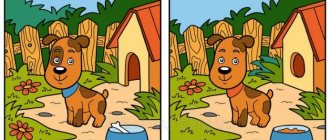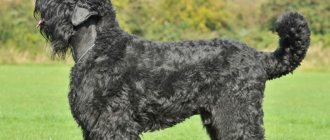Caring for your husky is simple and easy
Since tsarist times, hunting huskies have been the most numerous breed in our country. Dog lovers value them for their easy-going nature, good nature and intelligence. This breed does not require special conditions - the Laika can be successfully kept both in the city and in a country house. Like any hunting dog, the husky is active, resilient and has a well-developed investigative instinct. To maintain physical fitness and health, she needs to provide sufficient time for walking. Living in a metropolis cannot be an excuse. A full-fledged dog can be raised in any conditions - it all depends on the desire of the owner.
Breed Features
Known for their amazing performance and beautiful appearance, affectionate and loyal nature, huskies are a very popular choice, both as a pet and as a helper. They are athletic, smart, resilient and energetic. They love to be in the company of other huskies. They have a double coat and thick fur, perky ears and a unique color.
Breed varieties
The main, most common types of huskies:
- Russian-European Laika;
- West Siberian Laika;
- East Siberian Laika;
- Karelian-Finnish Laika;
- Finnish Spitz;
- Yakut Laika;
- Norwegian gray elk husky;
- Karelian bear husky.
Appearance
Consider the Siberian Laika, a very attractive dog that is known for its resemblance to a wolf. They are medium in size, with males slightly heavier and larger than females.
Height at withers/weight:
- males 53 - 61 cm, 20 - 27 kg;
- females 51 - 56 cm, 16 - 23 kg.
The proportions of their head are harmonious in relation to the rest of the body. Their skull is slightly domed and their muzzle is moderately long and wide, tapering towards the nose (which can be black, brown, or flesh-colored, depending on the dog's coat color).
The eyes are almond-shaped and can be blue or brown. This breed often has a sharp, focused gaze, and is also often mischievous and friendly.
The ears are medium in size and close set, positioned high on the dog's head. They are triangular in shape, slightly wider at the base, and held very straight. Fleshy, well covered with hair and have slightly rounded tips. Laikas have strong jaws with a perfect scissor bite, with the upper teeth neatly overlapping the lower teeth.
The neck is moderately long and powerful, the shoulders are well laid back, the front legs are muscular and straight. Their bodies are strong, have a broad chest with well-arched ribs, and always with well-developed muscles. Powerful hind legs - thanks to the developed upper thighs. Paws with small membranes between the toes, compact, oval-shaped, medium in size, well protected by fur. The tail is well covered with hair and is very reminiscent of a fox's tail.
The Laika has a thick, medium-length coat that lies close to the dog's body, with an undercoat that is thicker and softer than the outer coat.
Character
Laika is delighted to be in the company of people and sincerely enjoys their company. She forms very close social bonds with her owners. Gets along well with children and enjoys playing with them. She is very devoted and submissive to her owners, in extreme situations she is ready to sacrifice her life to save her guardian.
The habits of dogs of this breed are similar to almost all others (yelping, scratching, yawning, barking). If the husky is hungry or sick, it will howl or scream. They boast a very strong hunting instinct, which can become unsafe for small pets, including cats.
The Laika is known to love the sound of its own voice and can be very noisy at times with howling dogs.
They are very hardy, strong, and do not feel the cold thanks to their thick double “fur coat.” They need an abundance of mental stimulation and exercise to become a well-balanced dog.
If you leave your pet alone for any length of time, you will soon notice that the dog is bored and develops some unwanted behavioral problems, namely: excessive howling and the desire for various sabotage. Laika is a harmlessly cunning dog, athletic and flexible, so skillfully leaving the enclosure or any barriers will not be difficult for her. The most reliable and high barriers may also not stop the husky; they are very good at digging under the fence.
Since these dogs have a brilliant mind, this can make the training and training process somewhat difficult. They are a good choice for people who are familiar with this type of dog, but not for the first-time owner.
How to choose a puppy?
If you want to get an animal and decide that huskies are right for you, make your choice responsibly. Depending on the purpose of the establishment, East Siberian Laika puppies can be purchased in different places. For example, if you need a hunting companion, it is advisable to contact hunters. They will advise you, as one of their own, on the animal that is best suited for this purpose.
First, puppies are taught basic commands and only from 10 months they begin special hunting commands.
If your goal is breeding or you are looking for a companion or guard, we recommend visiting a nursery, where you can usually examine several West Siberian Laikas and choose the one you like best.
When choosing a West Siberian husky, you should not focus on such an indicator as the price of the puppy. The fact is that in this case, animals without an impeccable pedigree, but with good hunting qualities, can cost many times more.
Maintenance and care
Like any other breed, caring for a Laika requires constant attention from the owner. It is necessary to constantly monitor the condition of the skin and hair. It is important to check your dog's ears and clean them if necessary. In a word, prevention is much easier than subsequently treating the animal.
Daily physical activity and various exercises will give an idea of the dog's overall health. Also, do not forget about regular combing of the coat, especially during periods of shedding. Frequent bathing is not necessary at all.
In addition, they should eat high-quality foods that meet all their nutritional needs throughout their lives. This part of the article will briefly discuss how to care for your husky.
Nutrition
The health of your pet directly depends on proper and balanced nutrition. This item has a high priority in dog care.
The food offered must be fresh, rich in nutrients, based on natural ingredients. This breed is not picky about food; it does not need large portions. The most common are meat-based porridges or with the addition of meat by-products. It is possible to introduce dry food with a high content of vitamins, minerals and trace elements into the “menu”.
It is advisable that the daily diet include:
- dairy products;
- fish;
- cereals;
- meat (required).
Don't forget about vegetables and fruits, raw chicken and quail eggs. A variety of sweets, legumes, potatoes, white bread, and smoked foods can cause harm. Fried, spicy and salty foods should be excluded.
You need to feed your husky strictly on a schedule!
An important factor is keeping the eating area clean. Dishes should be thoroughly washed and changed regularly. The food should not sit in it for a long time. Never leave the water container empty.
How long huskies live directly depends on the correct food system and habitat.
Contents in the apartment
Knowing the character, behavior, and even more so the characteristics of this breed, we can say with confidence that a husky in an apartment will feel bored and constrained. These dogs love to see space and freedom, lead an active lifestyle, and feel like they are among wild nature. A closed space inside the city will not give this dog the opportunity to express itself.
The solution may be long walks (preferably with a leash) in the fresh air, in places that resemble the dog’s natural habitat. It is recommended to walk the animal for at least 2-3 hours several times a week.
It is worth thinking about various light loads during this process, letting your pet run and bark. In the apartment you need to clearly define a place for the pet. From a hygiene point of view, this breed requires frequent brushing, otherwise loved ones who cannot tolerate the presence of fur indoors may suffer. In this case, you need to wet clean the house more often.
Conditions for keeping a husky at home
Laikas are unpretentious dogs and adapt well to home conditions . They do not require trimming, cutting, or a special diet. With good care and the absence of injuries and hereditary diseases, they live up to 15 years or more, maintaining physical activity even in old age.
Basic Needs
If you are planning to get a husky and keep it in an apartment building , think in advance about how to ensure its comfort.
- Free place. Despite the fact that the husky is a medium-sized dog, it still needs living space. Consider in advance where the dog’s bed will be located (it should be a quiet, non-traversable place), whether there will be room for movement ( huskies , especially puppies , are active, and even in an apartment they need exercise).
- Healthy eating. The owner should have the opportunity to either buy high quality granulated food for the pet (holistic, super premium), or prepare the food themselves. Self-cooking involves purchasing meat and freezing it before feeding. Of course, you can go to the store to buy meat every day, but most likely you will quickly get tired of it. Therefore, the best option is dry food or your own portable freezer.
- Walking and playing sports. Laika is not a plush dog. This is a full-fledged hunting dog - strong and lean - which is capable of rushing even at a bear in the excitement of the hunt. He has corresponding physiological needs! With a husky you need to walk for several hours a day, run, fetch and overcome obstacles - this is especially important kept at home
- Attention owner. Hunting dogs become attached to people and miss them. You shouldn't get a Laika if you live at home alone, work 5 days a week for 8 hours and spend another two every day stuck in traffic jams. A puppy raised in such conditions will be ill-mannered or completely uncontrollable, and an adult animal will suffer from loneliness. Before purchasing a puppy, consider how much time you can devote to it.
It happens that owners of huskies (especially puppies and juniors) complain about the “aggressive” behavior of pets kept in apartments and wonder if it is possible to somehow correct the desire to chew and destroy everything. Of course, there are dogs with a disturbed psyche, hyperactive or aggressive by nature: this is a trait of their character.
However, the likelihood that you got just such a dog tends to zero. In fact, a husky that behaves uncontrollably and chews things does not receive enough attention and exercise. A healthy animal that has had a good walk while at home mostly sleeps in its bed. Well-known fact: dogs sleep 14–18 hours a day! If it’s enough to work with your husky , train and train it, and walk in nature, it simply won’t have time to destroy your home .
There is a fun marker that helps you determine if your dog is getting enough of your attention and movement. your housemates do n’t look at you like wolves when they meet and don’t swear at the constant barking and howling coming from your apartment , then most likely the husky is happy with its lifestyle!
Toilet issue
If you bought a puppy at the age of one and a half to two months, he is not yet allowed to walk outside - until the vaccination quarantine expires, that is, until the baby’s immunity becomes stronger. When keeping a small husky in an apartment , another “problematic” topic arises - the toilet. If an animal living outside the city, for example, in a private yard, can relieve itself under the fence until it is accustomed to walking, then in the apartment you will have to teach the puppy to use a diaper or newspaper.
Determine the place to send your needs in advance and do not change. Often the place where the baby left the puddle for the first time is suitable: most likely, the puppy has chosen a secluded place that can become his temporary toilet without compromising the comfort of people.
The mechanism of accustoming to a diaper (or newspaper) is as follows:
- determine the moment when the puppy became worried, was distracted from games and began to look for a place where he could defecate;
- quickly (but gently) take the baby to the diaper;
- After the successful completion of the event, praise the animal and give it a treat.
Laikas are smart, and most likely won't require a lot of lessons. As a rule, a couple of times are enough for the puppy to understand what they want from him and begin to use the diaper.
If there is an embarrassment and the baby does not reach the diaper, you cannot scold him. Wipe the puddle with a diaper, let the puppy sniff it and return it to its place for a while.
The corner where your makeshift toilet is located should not be washed using perfumes until you go outside. A dog’s sense of smell is much more sensitive than a human’s, and it uses it to identify “friend or stranger,” “my place or not.” In addition, a strong chemical smell can injure the puppy’s delicate nose, and he will have difficulty hearing odors for some time.
But the place where the unexpected happened can and even should be treated with a fragrant composition (floral soap, citrus spray)! This will help the animal understand that its toilet is not here at all. You only need to be careful with bleach: allergies to it are not uncommon among dogs.
Of course, even a reusable diaper needs to be washed constantly (and the newspaper needs to be changed after every trip to the toilet). It is not comfortable. Remember that this is a temporary measure, just until the end of the vaccination quarantine. Very soon you will be able to walk with your pet and teach him to do his business outside.
Outdoor content
For the Laika, the street is her element. Here she will feel confident and comfortable, and will always be cheerful and cheerful. Dogs of these breeds are unpretentious and independent. For a prosperous existence in an open area, you should think about its habitat. This could be a booth or another building.
But in the best case scenario, this is an enclosure for a husky. It is desirable that it be collapsible to make it easier to clean.
The construction process can be divided into 5 stages:
- Determining the dimensions of the future building.
- Selection of floor materials.
- Installation of walls.
- Installation of roof frame and roof covering.
- Door installation.
The enclosure for huskies provides various modifications, shapes and dimensions. In a well-insulated home with a leak-proof roof and a reliable floor, the husky will feel like a real owner.
To summarize, it can be noted that likes maintenance and care will not cause you a lot of trouble and problems. And the time spent on training fully compensates for the pleasure gained from hunting or simply communicating with a pet.
Choosing a puppy and caring for it
Let's look at the most significant steps when choosing a puppy:
- Inspect the entire litter (there should be no obvious difference in the size of the puppies, all should be equally developed).
- See if your eyes are watery and your ears are clean.
- Determine the absence of deficiencies and defects (absence of hernias, defects in skeletal development, correct bite).
- The head is the breed (by the shape of the head, even in puppies you can predict future flaws).
- The psyche of the puppy (patiently observe the behavior and habits of the puppies of the entire litter, determine the merits and character traits you need, identify various shortcomings). Under no circumstances should you choose a puppy based on your emotions (“very handsome”, “the first one to lick me”, “the most serious”). There are a lot of primitive experiments on recognizing a cowardly, morally stable or brave puppy.
- Focus attention, first of all, on the pedigree, get to know the puppy’s parents.
There is a lot of literature on how to care for a husky puppy. At this stage, he is only interested in long sleep, frequent games, and regular meals (4-5 times a day). Caring for a Laika puppy is fundamentally no different from caring for any other puppy. Important: mandatory vaccinations, feeding strictly according to schedule, adherence to the prescribed diet.
Rules for feeding two-month-old puppies
Have you thought about how to feed a husky puppy from 2 months and up? It is worth noting that not only the development of the dog, but also its life expectancy depends on a well-organized process. This procedure should be approached wisely if you want to show yourself as a caring and loving owner.
What to feed a two-month-old husky puppy? A young hunter needs to be accustomed to adult food over time, gradually introducing into the diet those dishes that we talked about at the beginning of the article. However, a properly balanced diet is only part of caring for your pet. It is also necessary to follow the basic rules of feeding a young husky.
Education and training
As mentioned earlier, this breed has a fairly high intellectual potential, which makes training a little labor-intensive and lengthy, although many of the dogs pick up everything on the fly. The result of a correctly followed process will be a true friend and helper.
Their training and education should begin from the first day the puppy enters its future home. Many basics can be taught to a puppy in a game (teach him a nickname, introduce him to fears, teach him to search, teach him to fetch objects). Over time, move on to mastering the simplest commands, introduce him to a leash and collar, and get him interested in water. Gradually the difficulty of training will increase, but believe me, this is life for the husky!

